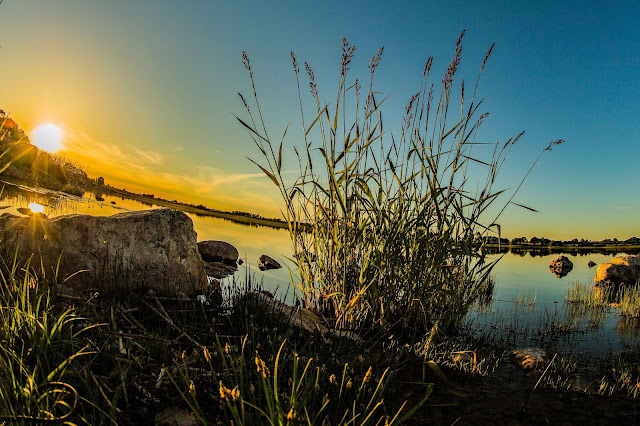The fisheye lens is a specialty lens and as such it is a
lens that some photographers find very useful and some photographers find a
total waste of time, effort and hence money.
Many people are under the impression that a fish eye lens is
only good for capturing photos full of distortion and converging lines, however
this is not the case. The primary purpose of a fish eye lens is to take photos
that are seriously distorted, but it can also be used to capture photos with
very little distortion as well. If you want to capture super wide photos that
aren’t distorted you can do this with a fish eye lens.
A fish eye lens is a very versatile lens, and many
photographers don’t seem to appreciate this. You can control the amount of
distortion (and converging lines) using a fish eye lens and you can create a
strong effect, a medium effect, a slight effect or no effect – it’s entirely up
to you. The amount of distortion you get in a photo taken with a fisheye lens
depends on the subject, where you place the subject in the frame and the angle
of the camera. Altering any one of these variables will have an impact on the
amount of distortion.
Below are some photos taken with the same fisheye lens
(Canon 8mm – 15mm f4L) at the same focal length (15mm) over the space of
fifteen minutes. The photos have been processed using a RAW converter to tweak
exposure, sharpness, blacks/whites and shadows. The photos below are to
demonstrate how using a fish eye lens doesn’t always end up with a really
distorted photo.
To get the most out of a fish eye lens you need to know what
you have to do to get the effect, i.e. the amount of distortion, you want.
Getting the best from a fish eye lens requires a lot of time, practice,
experimenting and patience. There is a learning curve in getting the most from
a fisheye lens and you will end up with many unsuccessful shots. If you don’t
get too down about this and persevere you will get there and when you do it’ll
be worth it. Trust me.
The fish eye lens I use is the Canon 8mm – 15mm f4L (full review here)
Being an L series lens this fish eye lens is made using the
highest quality materials and components, and also the best optics.
On a full frame camera it is possible to capture full
circular fisheye photos (i.e. those in a complete circle) as well as linear
fisheye photos, which means this lens is effectively two fish eye lenses in one
– this is the main reason I bought it.
This lens is not cheap, but then none of the Canon L series
lenses are, but it is worth every penny. You should see this lens as an
investment that will provide years of fun/enjoyment, quirky photos and trouble
free service too. This lens comes highly recommended and I wouldn’t be without
mine.
Below is a short video clip, courtesy of Youtube, "Fun with the fish eye lens" you may find interesting. Please feel free to check it out.
Photography ramblings video playlist that may be of interest
Below is a short video clip, courtesy of Youtube, "Fun with the fish eye lens" you may find interesting. Please feel free to check it out.
Photography ramblings video playlist that may be of interest







No comments:
Post a Comment